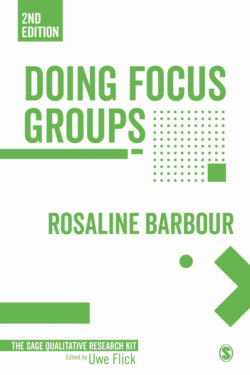Читать книгу Doing Focus Groups - Rosaline Barbour - Страница 21
На сайте Литреса книга снята с продажи.
Accessing ‘attitudes’
ОглавлениеNor, as we have already seen, are focus groups an appropriate method if you want to measure attitudes. Puchta and Potter (2002) argue that attitudes are the end result of a series of analytic decisions, which suggests that we should be wary of thinking that there is any such thing as an ‘attitude’. They remind us that attitudes are ‘performed’ rather than being ‘pre-formed’ (Puchta and Potter, 2004, p. 27). The implications for the process of analysis and use to which focus group findings can be put are further discussed in Chapter 11.
While marketing researchers tend to focus on using focus group data to make inferences regarding the attitudinal stances or preferences of the wider consumer body, within social science research this is generally not the preferred end product. Nor are results generally required as speedily as with marketing research and there is a venerable survey tradition within the social sciences that serves this requirement much better. If you want to make statistical generalizations from your data, then focus groups are not the method of choice. ‘Focus group samples are usually both unrepresentative and dangerously small’ (Morgan and Krueger, 1993, p. 14).
This reservation also potentially applies to some of the usages made of focus groups by health services researchers – particularly those working alongside clinicians. Some difficult questions are raised by the use, for example, of focus groups in order to access patients viewed as ‘recalcitrant’ or reluctant to take up services, screening programmes, or health promotion advice. Research in this genre is very similar to that carried out under the auspices of organizational research and, in common with this approach, tends to view the research question through a predominantly ‘professional’ lens.
